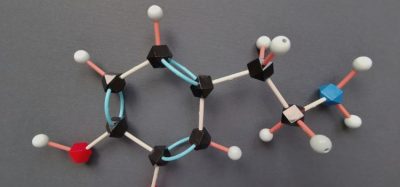Combination chemotherapy may significantly improve treatment for glioblastoma
Posted: 23 January 2018 | Dr Zara Kassam (European Pharmaceutical Review) | No comments yet
Addition of hydroxyurea to current chemotherapy significantly improved survival in animal models of glioblastoma…


A team led by Massachusetts General Hospital (MGH) investigators has found that adding the chemotherapy drug hydroxyurea to the current chemotherapy protocol for glioblastoma significantly increased survival in animal models.
“Through drug screening aimed at repurposing old drugs, we demonstrated that the FDA-approved drug hydroxyurea synergises with temozolomide in glioblastoma cells from newly diagnosed and recurrent tumours, including those that were resistant to treatment,” says Dr Bakhos Tannous, of the Neuro-Oncology Division in the MGH Department of Neurology, senior author of the report. “The combination led to a significant increase in survival in different mouse models, in some of which 40 to 60 percent of animals became tumour-free.”
The addition of temozolomide (TMZ) to surgical and radiation treatment has been the major improvement in glioblastoma treatment over the past 20 years, raising two-year survival from 11 percent to 27 percent. But 90 percent of patients receiving that combination still die within five years, representing what the authors call “a colossal failure.” The major factor leading to that failure has been the development of resistance to TMZ, which acts by inhibiting the synthesis of proteins within cancer cells.
Much of that resistance depends on the action of an enzyme called MGMT, which repairs the DNA alteration induced by TMZ. It is known that whether or not the MGMT promoter is methylated – a DNA modification that suppresses the expression of a gene – can predict whether a glioblastoma tumour will respond to TMZ. A change in methylation status that activates MGMT may be behind the initial resistance of tumours to TMZ, but other resistance mechanisms are also being investigated.
The fact that the combination of hydroxyurea and TMZ was effective in all of the cellular and animal models and not selective for a specific type of a tumour is very exciting
In their search for ways to overcome resistance to TMZ, the MGH-led team pursued a strategy of screening drugs already approved for the treatment of several types of cancer to see if they could improve glioblastoma outcomes. Dr Tannous explains that the development of new drugs is a long, difficult and expensive process that often fails due to unexpected side effects in patients. But much is already known about the pharmacology, mechanisms of action and potential toxicities of existing drugs. “The advantage of ‘teaching old drugs new tricks’ is that, compared with typical drug discovery, clinical use could have a much faster transition into the clinic,” he says.
The team screened a library of 21 anti-cancer drugs – both newer targeted agents and commonly used traditional chemotherapy drugs – against 18 cultured glioblastoma cell lines, including stem-like cells from newly diagnosed and recurrent tumours that were both sensitive and resistant to TMZ treatment. While several agents improved the response of some TMZ-resistant cultures, only hydroxyurea sensitized practically all cell lines – including several that were previously resistant – to TMZ treatment.
With these promising results, the team investigated that combination in several mouse models of glioblastoma, including tumours with different MGMT status. While either drug alone had only a moderate effect on tumour growth and survival, the combination of hydroxyurea and TMZ significantly improved both. Overall, around half of the animals receiving the combination treatment remained tumour-free at the end of the study period, and in those with a specific subtype of a tumour, 60 percent were essentially cured.
“The fact that the combination of hydroxyurea and TMZ was effective in all of the cellular and animal models and not selective for a specific type of a tumour is very exciting, since it suggests that the combination would be effective in all glioblastoma patients, not only those with inactive MGMT,” says Dr Tannous, who is an associate professor of Neurology at Harvard Medical School. “Hydroxyurea has been used for decades to treat conditions such as sickle cell disease and some types of cancer, so bringing this approach into the clinic should be straightforward. We are currently preparing to test this combination in a phase 1 clinical trial, which we hope to start very soon.
The team’s report has been published in the journal Neuro-Oncology.
Related topics
Anti-Cancer Therapeutics, Drug Delivery Systems, Drug Development
Related organisations
Massachusetts General Hospital (MGH), MGH Department of Neurology









